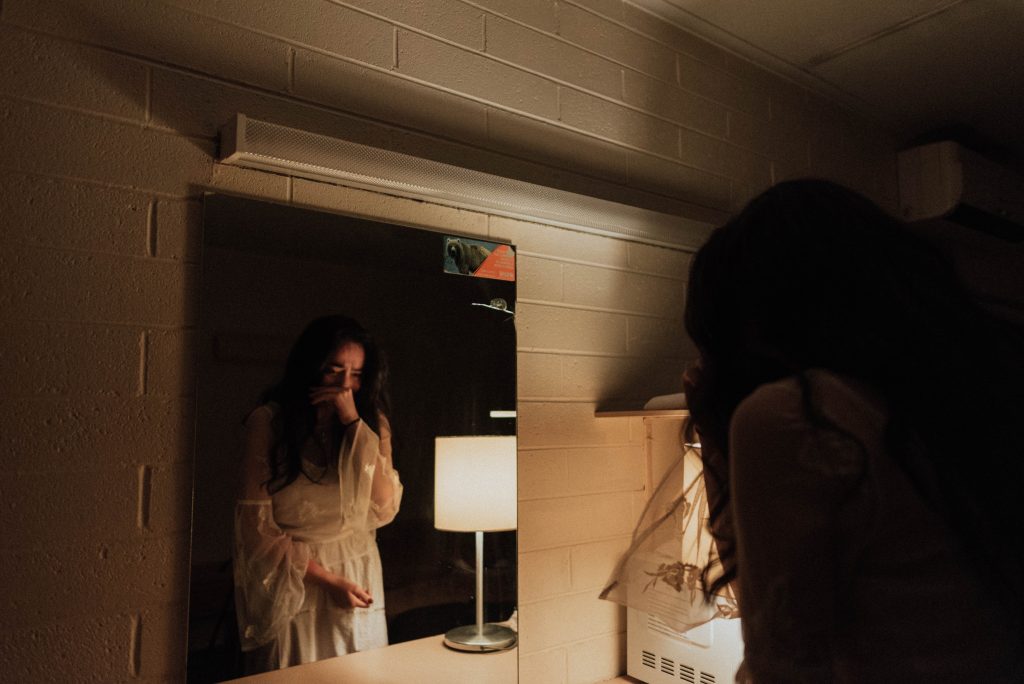
I was afraid to leave the house today and I am not the only one.
Considering the issues in the world at the moment, this might seem trivial, and maybe it is, or at least I wish it was. This morning, I woke up, tried on a shirt that I’ve worn many times, looked in the mirror and felt disgusting. I won’t hide the way I felt. I gave myself the same look I would give a group of maggots on a rotten apple. If it were a friend looking at themselves that way, I would not encourage it. Carolyn Korsmeyer claimed that ‘it is the foul nature of the objects that trigger this emotion’. I saw myself as foul because I had a muffin top.
The modern world is an incredible place, the connections we can make and maintain are wonderful, and our ability to influence each other is widely beneficial. After the last two years, we all need something to make us laugh and remove us from the solitude that is Covid-19 isolation. Our feeds are filled with body positivity and acceptance, but I feel like there is still an expectation to look a certain way.
It is encouraged to be ‘thicc’, but not to be thick – where is the line? At what point does a normal woman transition from ‘thicc’ to thick? Why is the thickness of my bum more accepted than the thickness of my belly? I heard myself say that ‘I look pregnant but at least my ass looks chunky’ with full candour. We are expected to have a slim waist, thick thighs and a booty that can hold a martini glass. Our feeds have transitioned from the very slim Paris Hiltons or Britney Spears to the now ‘slim, thick’ Kim Kardashians. We are surrounded by gym rats showing us how to grow our glutes and tighten our abs.
Growing up bigger than the average kid brought with it a vast amount of fat shaming. I wasn’t the only person who experienced this; there is no question of why I stopped eating bread and never wore baggy jeans until my 20s when ‘thicc’ became fashionable. In 2017, Be Real did a campaign that found that 52% of 11 to 16-year-olds regularly worry about how they look and 30% of 11 to 16-year-olds isolate themselves because of body image anxiety. I am certain that this is not something I went through alone and know that this is a shared experience of our generation.
There is no getting around it and I don’t want to suggest that we should. But as the bear hunt song goes, if you can’t get around it, you’ve got to go through it. Shouting from the rooftops to young people that 1) you are not alone in feeling self-conscious and 2) you don’t need to be, may help with body anxiety and potentially reduce the rates of eating disorders or BDD. There is very limited data about the number of cases for BDD and it is likely much higher than the recorded 5 in 1000 people (according to stats by OCD UK). It is difficult to diagnose and is often confused with other mental health disorders. The Children’s Society explained that ‘over 19,000 people were hospitalised for an eating disorder in 2018/19, a quarter of whom were under-18. There has also been a 50% increase in children accessing services for eating disorders since 2016/17’.
I am not claiming that people who suffer with body image anxiety all suffer from BDD or an eating disorder; however, I would like to suggest that the negative association and anxiety around body image and weight stems greatly from social media and society. A greater awareness and acceptance from an earlier age would significantly improve the mental wellbeing of young people and adults. This is not a game of pin the tail on who gave you anxiety, but merely a way of opening our eyes and starting a conversation about how we want young people to view themselves. There is no way to remove our human desire to look good or attract a mate – it is a primal instinct – but more could be done to show that you don’t need to look like an Insta baddie to be attractive or desirable.
